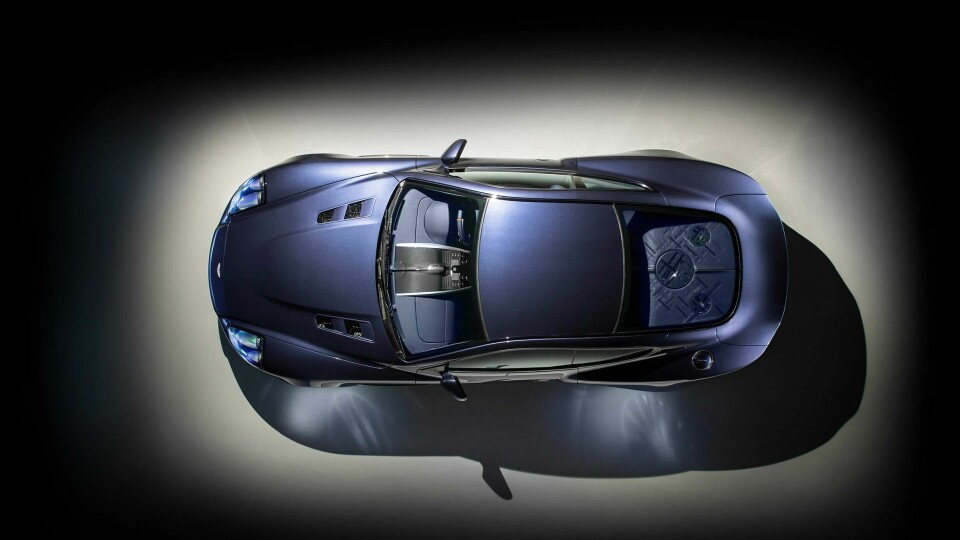
Ian Callum on his new venture – and his new Vanquish
Ex-Jaguar and Aston Martin design boss talks us through his eponymous design company and its first product
Perfection is, to all intents and purposes, a myth – as unreachable as infinity. It also becomes extraordinarily difficult to even get close when the brief is a series-produced product as complex, multifaceted, expensive and heavily regulated as a car. You can chase perfection if you feel it improves the end product just for pushing it as far as possible, as long as you humbly accept that you’ll never actually get all the way there.
This is the feeling we had after speaking to two veteran designers in the space of two weeks, whose latest projects involved taking an existing work and trying to ‘fix’ it – clean up the details, add a new idea they’ve had in the intervening years, update or replace what hasn’t aged well or wasn’t ‘right’ in the first place – going from nose to tail with a fine-toothed comb and improving as much as possible of a car that the average onlooker probably thought looked brilliant already.
This brings us to Ian Callum CBE and his new venture, CALLUM. Despite the singular company name, the design firm was founded equally by four men: engineer Adam Donfrancesco, formerly of Noble, Aston Martin and JLR; David Fairbairn, former head of special projects at JLR; Tom Bird, former JLR commercial manager, and Ian Callum himself.
(NB: To differentiate between Ian Callum the man and CALLUM the company, the latter will be in all-capitals.)
“I decided 10 years ago that it would be 20 years [at Jaguar]. I made a conscious decision after 10 years that the job wasn’t really done; it took a lot longer than I ever thought it would, and that’s just the nature of the beast, of the car business. So, I decided to give it another 10 years – and when the 20 years was up, I was ready to go,” Callum said of leaving Jaguar Land Rover.
“I felt I’d done what I had to do. I had a very good team, which I’d built up – and I’ve left it with the team to continue – and I felt my job was done. But, I did have an obligation to create work around a specific brand, and nothing else. Our leadership was quite clear that we didn’t really work with any other partners, and I just thought that, ever since I’d been at college doing Industrial Design, there was always that need to try and break out and do other things.”
But, as the four-way ownership demonstrates, this is far from a solo project. “You can’t go into this alone, and I just felt the equal-measure structure is the best way to do it, so that everybody’s motivated to make a success of it,” explained Callum. “You’ve got design, project management, business acumen and a good engineer – and that’s what it takes to design things. I want to make a success of it because I still feel I have stuff to do – so it’s time to go and do it in much more of a free spirit, so to speak.”
At the Concours of Elegance, the world saw CALLUM’s first project: The Vanquish 25. Endorsed by Aston Martin and produced in partnership with R-Reforged, it represents Callum’s cathartic ‘remastering’ of one of his greatest hits, which first appeared in concept form as ‘Project Vantage’ a full 20 years ago.
“It’s something that I’ve genuinely wanted to do. I bought [an original Vanquish] with the intention of doing it up – this is long before this became a business case – David [Fairbairn] heard about it and said ‘well let’s turn it into a proper business case’, so we bought another one to tear it down and we built this [blue] one,” Callum explained.
The first thing the team sorted out was the stance. “I mean, look at the old one; you see it’s a bit miniscule and its stance doesn’t have that sense of strength about it… so that was the first thing to fix on the car: get the wheels and the ride height in the right place, without any detriment to the dynamics. Working with Adam [Donfrancesco] on it, we’ve managed to get a nice balance of aesthetics and driveability.” The wheels have been pushed further out and enlarged to 20 inches. They’re very similar looking to the originals, as that multi-spoke design has aged well.
Compare the original Vanquish with the CALLUM VC25, above
The sheet metal is unchanged, which shows you what a difference wheel fitment can make, but new composite bumpers and all-new lighting refresh the exterior further. Up front, the grille has been subtly reformed so that the eye can run seamlessly from the side of it into a new lower element, in similar fashion to the treatment on the first Aston Martin Rapide (2010). Either side of the double-grille are new carbonfibre air ducts sat inside flared cheeks, while in an act of decluttering, the old indicator lights have been moved up into the main light cluster – itself now a full-LED system to help “bring the car into this century,” as Callum put it.
The most noticeable exterior changes, however, are at the back. The taillights are all-new LED units. Within each cluster is an echo of the long ‘boomerang’ graphic that later appeared on the Aston Martin DB9 (another Callum work) and subsequently the entire Aston range – plus the Jaguar XF. “It just fitted the car,” commented Callum. “I also wanted to get that form to run around, and enclose that whole shape at the back.” To this end, a painted carbonfibre strip lines the clusters’ outer edges and bridges the gap between them across the Vanquish S-spec tailgate. CALLUM considered an all-new tailgate, but the subtlety of the changes they wanted didn’t justify the cost of making it. They did, however, replace the Jaguar XK8 mirrors with bespoke ones.
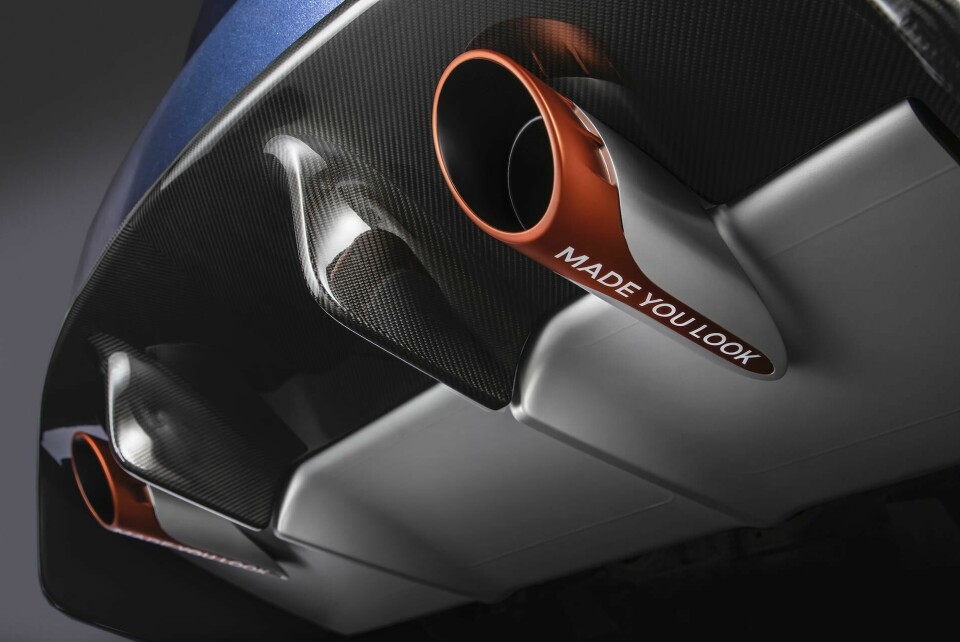
The rear bumper has been noticeably flattened and had a large diffuser gouged into it. Callum explained that the original “was very much of a fashion where you pulled the back of the car as far back as possible. My feeling now is that it should very much be trimmed off – that’s what we did on the F-Type as well – and then the venturi speaks for itself, really.”
Within the diffuser, painted a vibrant orange, sit the tailpipes – but there’s a neater feature just behind them: “The nice thing is the exhaust box is actually the same shape as the diffuser.”
This helps clean up the rear apron better and means the venturi can effectively run deeper into the underbody to help create downforce – or at least reduce lift.
As you can see in the press images, or if you’re willing to lie down under the car, the tailpipes say “Made You Look” on them. “I think it’s easy to just take it all too seriously, and I think that element of tongue-in-cheek is important in a car like this,” said Callum. “It is serious because it’s going to cost quite a lot of money [around £550,000], but I think the attitude is part of the story, really.”
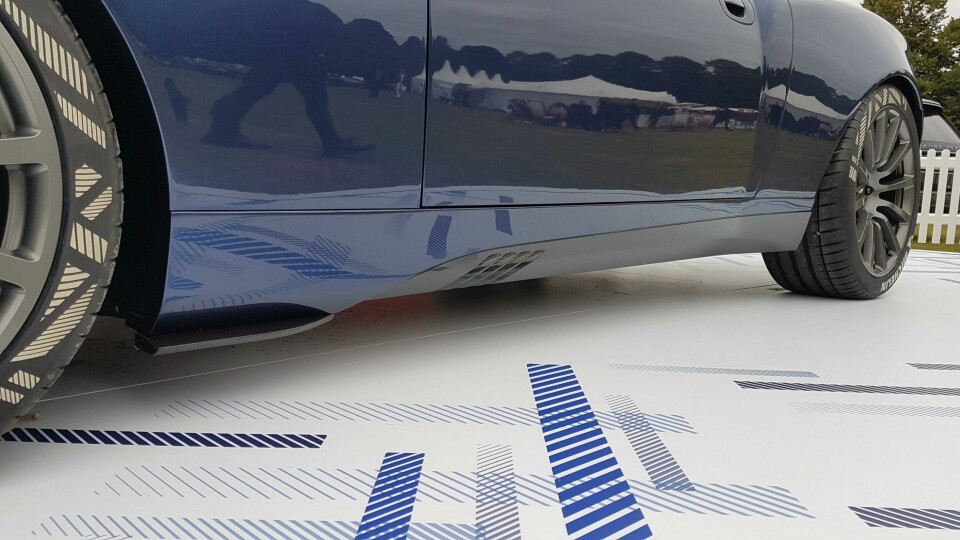
Tying the front and rear together, new side skirts initially continue the carbonfibre blade of the front splitter as if it has gone ‘through’ the front wheelarch. “I get slightly obsessed with the idea of the front lines ‘through’ the wheel meeting somewhere and joining the two areas together. I think there are too many cars where they don’t really have any relationship. It may have some aero benefit, but that’s not why it’s there.” The side skirt then arches up into an accentuated take on the original car’s graphic.
“I wanted to do something which filled the car better, because that’s very much part of a ‘90s style, that chiselled-out scallop,” elaborated Callum. “I wanted to keep the graphic, but I wanted there to be more substance to it, so the whole side skirt has been redesigned with this very strong section to it. Then the sill runs into the rear, and it was quite difficult getting this rear corner to work in terms of mass – but I love the idea of using carbon.”
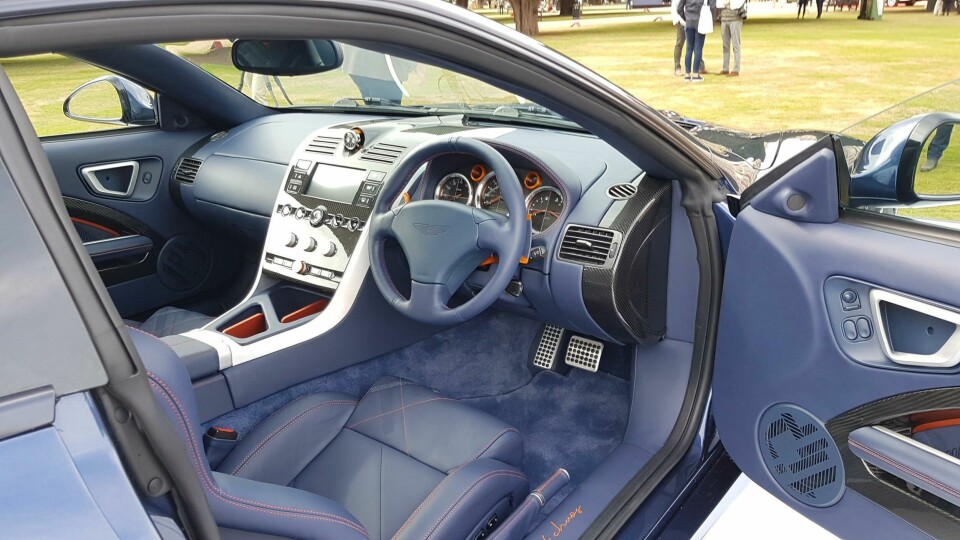
However, as Callum pointed out, “the big story, really, is the interior. I was never happy with the interior of the existing car, especially door trims and the XK8 door pulls – it just looks very old, a bit tired. The centre console of the original concept, Project Vantage, had a lot of aluminium in it, and unfortunately we lost a lot of that while we were creating the production version… so I brought some of that back.”
As such, the interior has been almost completely overhauled. “The whole dashboard’s new, which is crazy really,” remarked Callum. “If you’re gonna revamp a car the last thing you want to do is change the dashboard, but we’ve changed the whole dashboard, and the [IP] cluster binnacle is all-new, and we just generally cleaned it up.” By contrast, the steering wheel is largely the same. “We’ve retrimmed it, but we can’t start messing about with the airbags.”
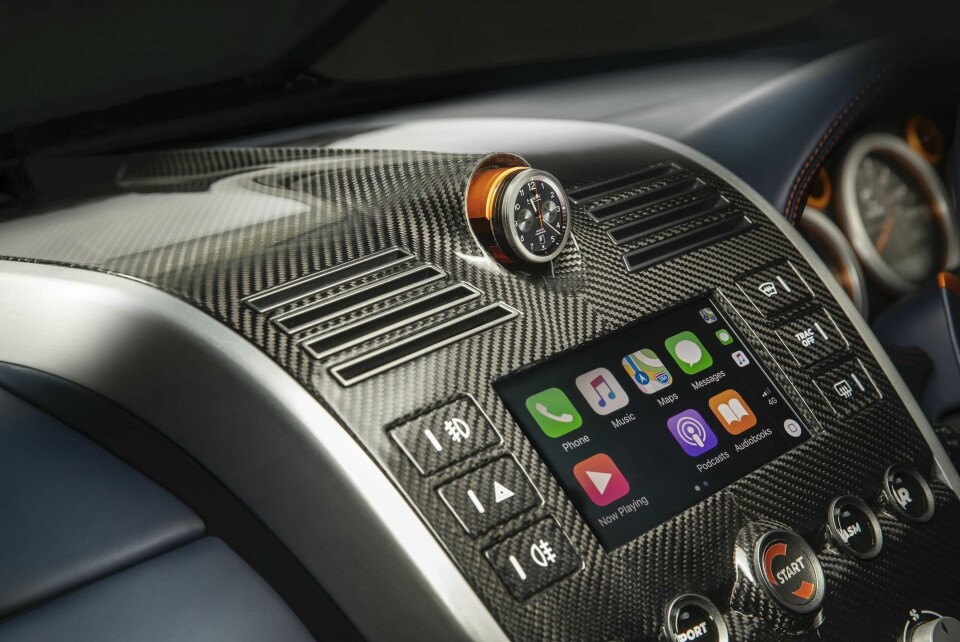
Atop the dash’s carbonfibre waterfall is a special timepiece. “We’re associated with a lot of companies, but I’m very close to Bremont, through the Jaguar connection. We’ll have a Bremont watch in the centre which you can actually take away, because it’s a proper mechanical watch. It will wind up as you drive the car, so if you don’t drive the car for a while it’ll probably stop!” The modest touchscreen below it is an aftermarket unit with CarPlay and Android Auto, bringing the infotainment interface up to date. Elsewhere on the dash, as Callum points out, “we’ve got fixed vents on the dashboard, because we feel it’s adequate. It’s got standard vents on the outside. The switchgear is pretty much the same; we didn’t want to get into changing that. I like tactile switchgear, as you know – I’m not a lover of giant digital screens!”
Callum’s team also introduced raised ‘spine’ running through the centreline of the whole interior. He continued: “We’ve taken the rear seats out and we’ve got Mulberry luggage in the back, which is designed to match our ‘abstract tartan’, as I call it.” Ah yes, you may have noticed the elaborate pattern on the exterior bonnet vents, tyre markings, and the interior upholstery.
“I always wanted to do my own tartan, and I worked with a really clever Colour & Materials designer who works with us, Kate Miles, and I said ‘let’s start this tartan’ and she said ‘let’s start to pull it apart’ – sort of fragment it and see what happens – so we tried a few different ideas. We decided the density of it can be according to where we want to put it; in some areas it’s very loose, like the seats, in some areas it’s quite dense.” Callum hopes it will become a trademark of CALLUM’s work, along with the four vents on the exterior – deliberately different to the usual three or five.
The Vanquish 25 is a project that simultaneously gets a few frustrations out of Ian Callum’s system, and gets the design company off the ground. From here, though, our real interest is in what might come next.
“We’ll do something a bit more radical next time,” began Callum. “We started this project, one because I wanted to do it, but secondly because it’s a manageable project – it’s not easy, no car is easy, but it’s a manageable project – so we’ll get this under our belt and then hopefully we’ll get to something bigger. Fingers crossed it all goes well… and hopefully this will fund the next one! We’ll see.” He explained to us that future car projects will not involve reviving or finishing-off near misses from the past – like the Jaguar C-X75 people still ask him about – but revisiting more past successes.
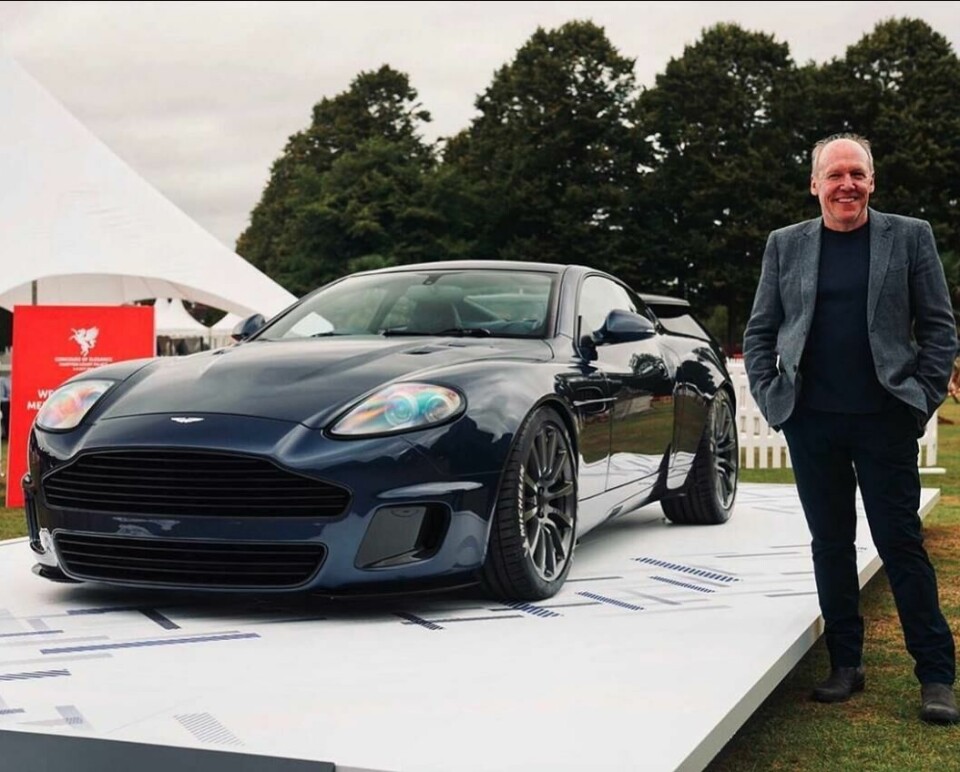
“I’d only want to work on cars that I’d done originally. There’s a reasonably big portfolio there to choose from! But eventually, you know, I would like to do a complete car. But we’ll do it in stages; we’ll live and learn, build up some collateral and some capital, and work towards it. It may be mechanical; it may be something else. Who knows? I mean, electric cars do offer a much freer sense of opportunity and are a much simpler entity of packaging – and much simpler full-stop – so there may be some future there. No plans yet, we’re just talking through it. It’s something I’d certainly like to think about.”
If even the greats feel their best works aren’t quite right, then perhaps design is never truly finished. This could be a depressing thought for the perfectionist, but it can also be seen as an ever-present opportunity to revisit or outclass what was achieved first time around. Time will tell us how CALLUM will go about doing that next.












































